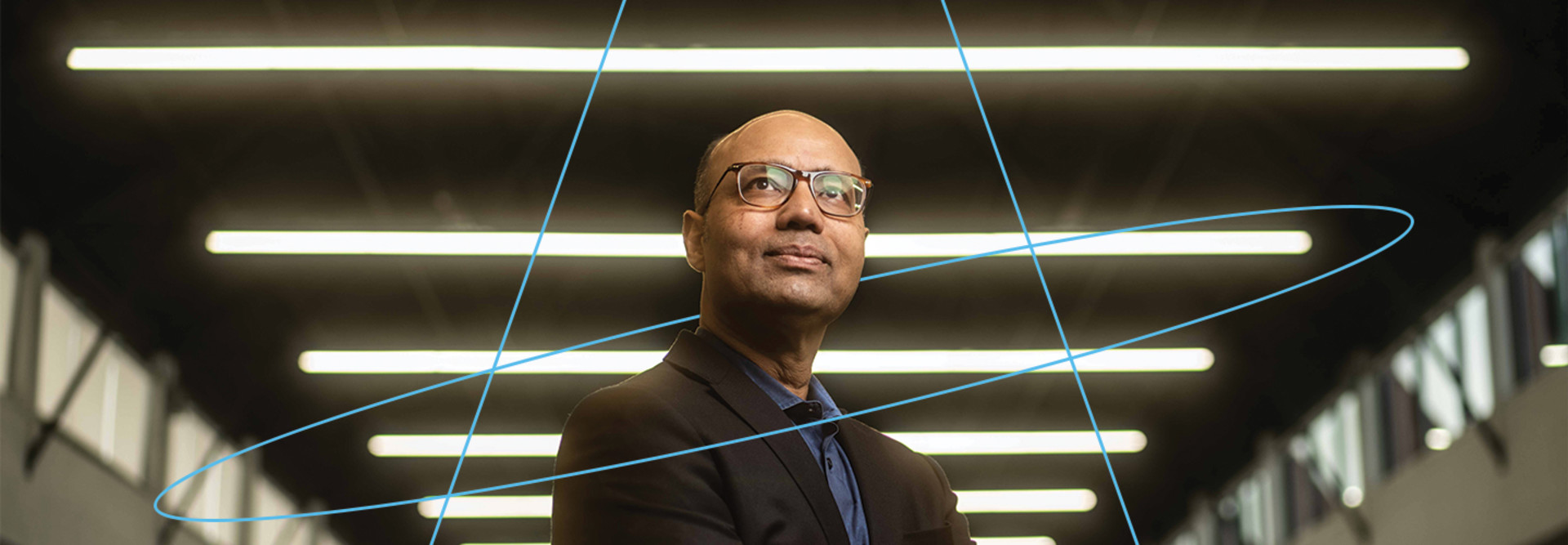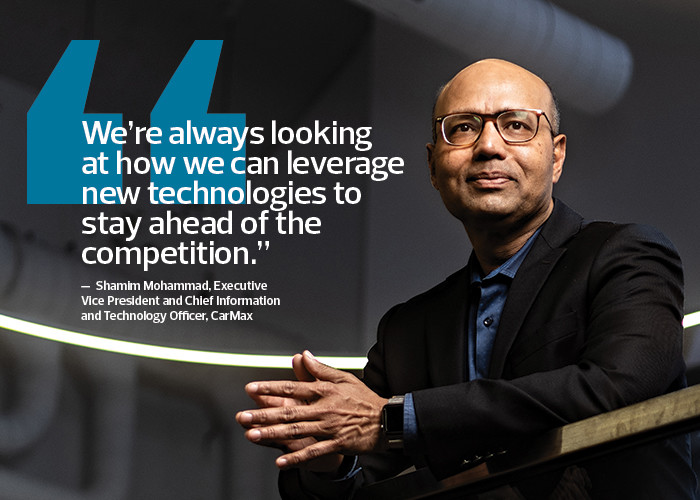Anyone who’s been in the market for a used car is probably familiar with CarMax. Since it opened for business more than 30 years ago, the company has earned a reputation as a top place for people to find their perfect match or sell a car.
What most vehicle shoppers don’t know, however, is that the company leans heavily on its CarMax Technology Group to pull the strings that make the company work. The big reason things run as smoothly as they do for customers who research and purchase cars online: the ever-evolving systems and tools churning away behind the scenes.
“We’re always looking at how we can leverage new technologies to stay ahead of the competition,” says Shamim Mohammad, CarMax’s executive vice president and chief information and technology officer. “I like to say that we’re on an IT modernization journey, and it’s a journey because it never actually ends.”
The latest turn on the company’s road to success involves scaling up while improving efficiencies with Microsoft Azure.
CarMax is using the cloud platform to help customers digest a massive amount of data associated with its inventory. With retail stores in 41 states and at least 50,000 cars on its lots at any given time, the company offers buyers so many options that making decisions can become overwhelming.
“Every car, and every year and model, has different features and functions,” Mohammad notes. “And then you have the customer reviews on those cars. It’s a lot for anyone to navigate.”
Learn more about the comprehensive IT solutions modernizing the retail experience.
The Azure cloud helps CarMax access a wide range of generative artificial intelligence–enabled tools. One application allows the company’s software engineers to quickly generate code, or improve existing code, to build new digital products. Another facilitates data structuring and search engine optimization. They use machine learning (ML) capabilities to make sure posted photos show details that matter most to car shoppers, and they use OpenAI’s ChatGPT to curate written content for customer-facing research pages.
A separate feature with AI at its core is an app that allows customers who wish to sell or trade in a car to simply submit a license plate photo to receive an instant offer good for seven days. Since CarMax rolled out the tool in early 2022, the company’s car purchases — essential to its business — have increased drastically.
“Within a few weeks, we became one of the largest, if not the largest, online buyers of cars,” Mohammad says. “That’s something that wouldn’t have been possible without Azure and the power of the cloud.”
$660 Billion
Projected annual value of generative AI on the retail industry
Source: mckinsey.com, “The economic potential of generative AI: The next productivity frontier,” June 14, 2023
Retailers Embrace AI, Analytics, In-Store Tech
As Mohammad and his colleagues at CarMax expand the company’s services with the help of new technologies, a growing number of other retailers are doing the same through IT modernization initiatives of their own.
Retailers are seeking to leverage technology to respond to increasing e-commerce, evolving customer behavior, bottlenecks in the global supply chain and other forces, experts say.
Retailers are also embracing new systems and tools that promise to improve the customer and employee experience, says Margot Juros, research director with IDC Retail Insights.
She points to an IDC survey showing that retailers are ramping up their investments in AI and ML, data analytics and in-store mobile devices in particular, and that many are turning to cloud solutions to upgrade their digital infrastructure.
“It’s all part of this trend that we’re seeing where retailers are becoming more future-oriented,” Juros says. “They’re looking ahead and recognizing that modernization is how they’re going to reach their goals.”
Advanced Networking Tech for Retail Stores
That’s a good description of the thinking at Allbirds, a San Francisco-based company that launched in 2016 as an online-only shoe retailer. One year later, it opened the first of 60 physical stores around the world. In Allbirds’ case, modernization has been part of the business plan from the very start.
“We’ve always been cloud-first,” says IT Director Joshua Quick, explaining that Allbirds relies on multiple Software as a Service providers to streamline its IT infrastructure and optimize the shopping experience for customers. “That’s kind of been our secret sauce: keeping everything working with the best in breed for whatever the use case happens to be.”
Allbirds uses Cisco Meraki networking, for example, to connect its various retail stores. The cloud platform includes mobile device management capabilities that allow Quick’s team to push apps to the point-of-sale tablets that customers use to place orders in stores. And because Meraki works seamlessly with Okta — Allbirds’ identity and access management solution — it also simplifies security.
“With everything, we try to make it as easy as it can be for the right person to get into the right tools,” Quick says, “but we also want to make it as hard as possible for the wrong person to get into the wrong things.”
Click the banner below to learn how enhanced video surveillance can help prevent retail loss.
Making Online and Multichannel Sales More Effective
If Allbirds is a prime example of an online retailer that’s successfully adapted its business to meet the demands of in-person shoppers, then the multinational cosmetics company Estée Lauder is a retailer strategically moving in the other direction.
Until a few years ago, the lion’s share of Estée Lauder’s revenue was driven by sales in its brick-and-mortar stores. When the pandemic arrived, that changed almost overnight, handing Gareth Hughes, executive director of retail IT, one of the biggest challenges of his career. “All of a sudden, everything was online, and since then, that’s mostly been our focus: online and omnichannel,” Hughes says.
The company now relies on cloud-based technology from Oracle to deliver a consistent experience for consumers, whether they’re shopping online or in a retail store. The platform lets associates offer personalized service by allowing them to quickly identify customers and access their transaction histories. An integrated tool providing real-time visibility into inventory also helps the company operate more efficiently.
“Previously, we had a lot of different systems in different stores in different countries, so there was really no standardization,” Hughes says. “Now we have a platform that’s uniform across the organization and that anyone can access from anywhere.”
Hughes adds that the company’s offices largely run on Microsoft 365, and that it is currently exploring possible uses for ChatGPT and other AI tools. IT modernization, he says, is already paying dividends for Estée Lauder by lowering costs, increasing sales, and improving associate and customer satisfaction.
In the future, he predicts, things will only get better, “as long as we continue to listen to consumers and give them what they want.”














